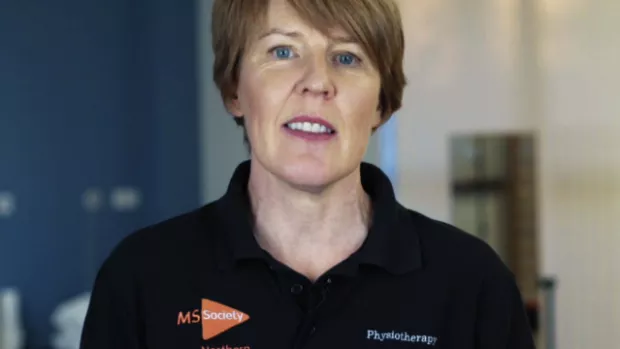
Secondary progressive MS (SPMS)
Secondary progressive MS (SPMS) is a stage of MS which comes after relapsing remitting MS for many people. With this type of MS your disability gets steadily worse. You're no longer likely to have relapses, when your symptoms get worse but then get better.
In the past, before disease modifying therapies (DMTs) came along, it took around 20 years for relapsing MS to change into secondary progressive MS. But thanks to today's MS drugs this is changing:
- fewer people are likely to go on to secondary progressive MS
- for people who do, it could take longer to happen
How is secondary progressive MS (SPMS) diagnosed?
Secondary progressive MS can be hard to diagnose. To get this diagnosis you must have had relapses in the past, and now your disability has been getting steadily worse for at least six months. Things getting worse mustn't be linked to any relapse you've had.
It's possible that, when you're first diagnosed with MS, you could be told you have secondary progressive MS. This is rare but can happen if symptoms of the relapsing phase of your MS weren't diagnosed correctly or were ignored.
Secondary progressive MS is different from primary progressive MS, which is progressive from the beginning.
What sort of changes happen when you move from relapsing to secondary progressive MS (SPMS)?
Usually with secondary progressive MS your disability or other symptoms gradually get worse. The old pattern of you getting relapses followed by you getting better usually comes to an end. Some people may still get relapses but they don't tend to make a full recovery afterwards.
You might notice more difficulties with getting around than before, or other symptoms might get worse. Changes can happen very slowly though. It might take some time before you and your doctor are sure you have secondary progressive MS.
Everyone's MS is different - even if someone else has secondary progressive MS, they're likely to be affected in an individual way.
Can you still get relapses with secondary progressive MS (SPMS)?
Some people still get the occasional relapse when their MS becomes secondary progressive. That can make it harder to work out whether your MS is relapsing or secondary progressive.
If you do have relapses, this means you have active secondary progressive MS. 'Active' here means your immune system is still attacking the myelin around your nerves, causing inflammation. A relapse is a sign of this inflammation. Another sign of it is when your neurologist can see new lesions on your MRI scans.
Recovery from a relapse can take some time. It can be hard to tell whether symptoms are due to your MS progressing (getting steadily worse). If they are, these symptoms might not go away. But if your symptoms are the lingering effect of a relapse, they might go with time.
Managing secondary progressive MS (SPMS)
There's many ways to manage your symptoms, including drug treatments, physiotherapy and exercise.
Steroids
If you have secondary progressive MS with relapses, they can be treated with steroids.
Find out more about managing relapses
Disease modifying therapies
If you have secondary progressive MS and you still get relapses, or inflammation on your MRI scans, there are two drug treatment DMTs available: a beta interferon (Extavia) and siponimod (Mayzent).
And in England, new rules to get siponimod on the NHS are slightly broader than this.
If you think they could help you, ask your neurologist, MS nurse or GP for more details.
HSCT
HSCT is a kind of stem cell therapy. It can’t regrow nerves or repair damaged myelin. So it's unlikely to help people with advanced progressive MS. HSCT is rarely offered on the NHS in the UK to people with secondary progressive MS, and even then only if their MS is still active. Your MS is active if you still get relapses, or there are new or growing lesions on your MRI scans.
What support can I get?
You're not alone. Our MS Helpline team can help you answer all your questions about secondary progressive MS, including ones about financial support.
We also have a progressive MS booklet you can download.
And you can find support on our forum and through our network of local groups. Your MS Team (your neurologist or, if you have one, your MS nurse) should also give you ongoing information and support tailored to meet your changing needs.
Last full review:
We also update when we know about important changes.





